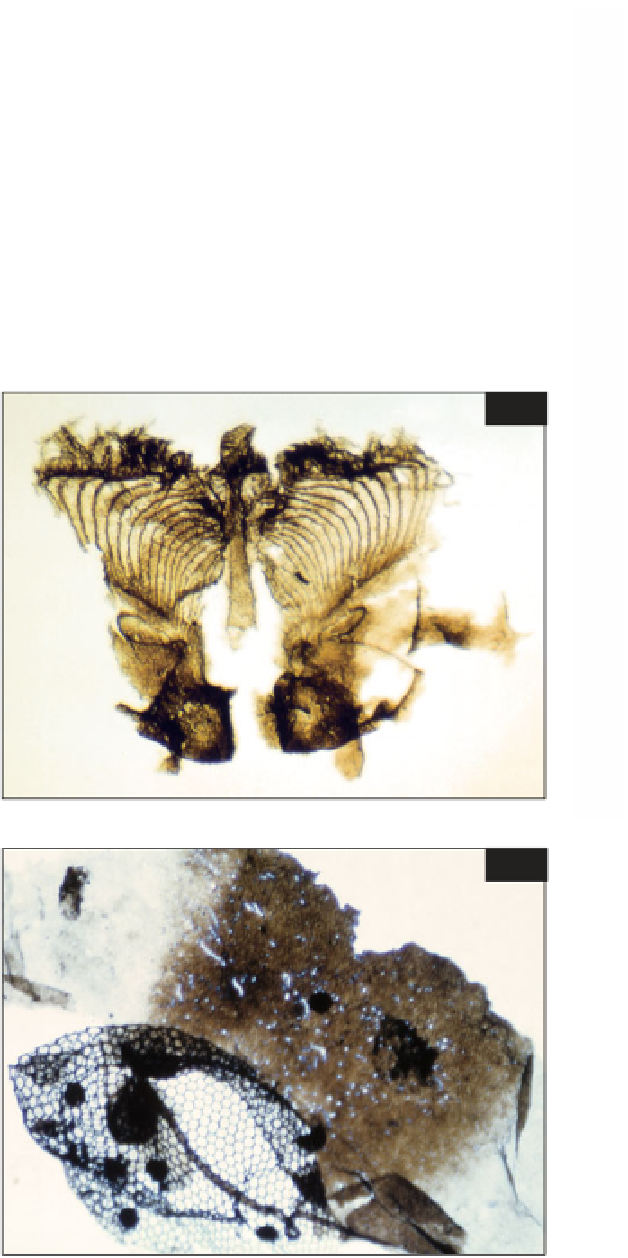Geoscience Reference
In-Depth Information
(1988) from the Brown Mountain locality.
They allocated a new order to this animal,
Devonobiomorpha, which seems to be
sister-group to the extant epimorphic
centipedes (those in which the young
hatch from the egg with the full
complement of legs), and therefore more
advanced than the Scutigeromorpha.
resembling that of modern bristletails
(Archaeognatha) have been found at a
number of Silurian and Devonian sites.
The cuticle is thick and bears short,
arched rows of oblong sockets for the
insertion of scales. There is a single scrap
of this distinctive cuticle from the Silurian
of England, large sheets of it occur at
Brown Mountain, and a few pieces from
South Mountain still have the scales in
place (Shear and Selden, 2001). In
addition, some antenna-like fragments,
possible mouthparts (
104
), and a
compound eye (
105
) from Brown
Insects and their allies
The evidence for Devonian insects is
sparse. Insect precursors, such as
springtails (Collembola), are known from
the Rhynie Chert. Pieces of cuticle closely
104
104 Enigmatic mouthparts,
possibly from an insect AMNH.
Width 0.5 mm 0.02 in.
105
105 A scrap of cuticle bearing
a modern-looking compound
eye could be evidence for
insects or might have belonged
to one of the centipedes
AMNH. Each eye facet is
0.026 mm 0.001 in in
diameter.



Search WWH ::

Custom Search